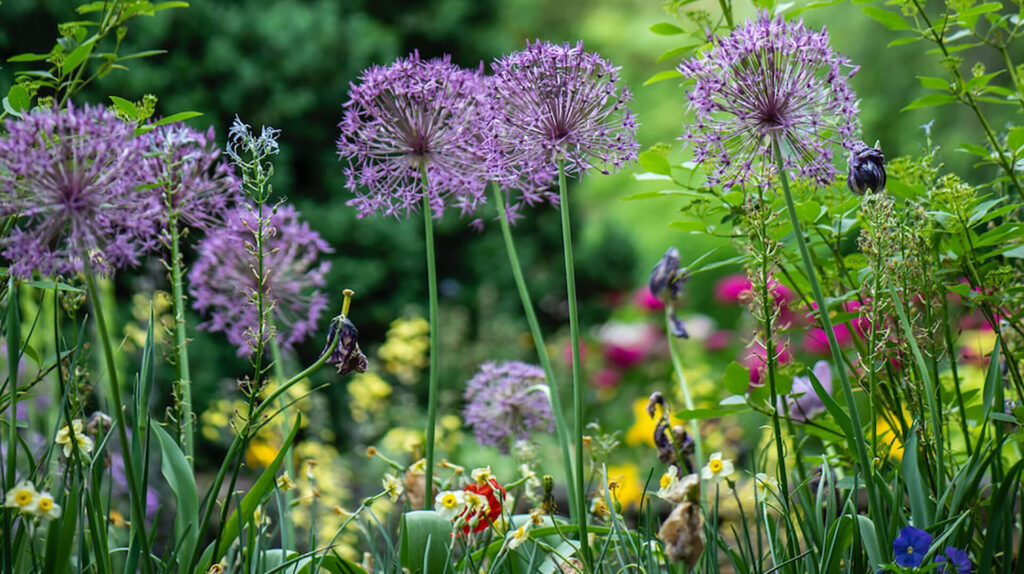Flowers
Grass Clippings for Lawn Care
Gardening is a thoroughly rewarding and satisfying task that can keep us connected to nature.
If you’re on the hunt for means of sprucing up your garden, using grass clippings could be one of the most economic and effortless solutions out there.
Grass cuttings are an inexhaustible source of organic matter which can be used in gardens either as mulch, fertiliser or compost – all making your garden and bed of roses look great while also saving you cash from splashing out on pricey products!
💡 In this blog post we’ll delve into how exactly to use grass clippings from the garden in your lawn care routine for a fabulous looking garden!
Lawn care tips plus composting info to make everything possible with what little time/money you have available at hand!
Collect Grass Clippings for Garden Mulch
Mowing your lawn when it’s dry is the best way to collect grass clippings for use as mulch in the garden. It’s free, plentiful and pretty easy to do – plus there are a few tips that can make it even easier.
For starters, try mowing with an electric lawn mower if you have one – just watch out for any stones or sticks on the ground which could damage the blades and cause danger to those around you!
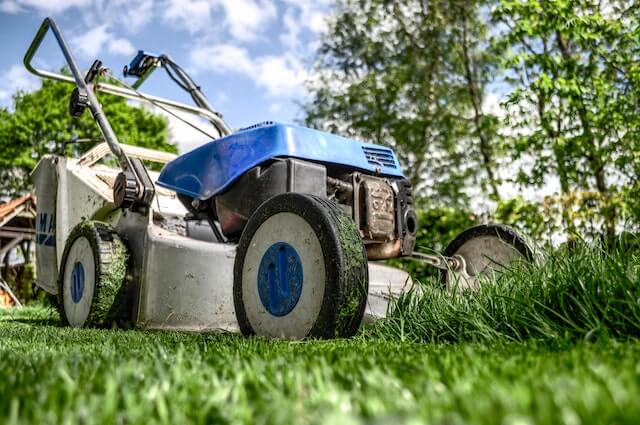
Wet grass will stick together making collecting up more difficult so keep an eye out for signs of rain in advance of doing this job.
If you’ve got a sizeable garden with a lush lawn:
it may be worth considering using a mulching blade in your lawn mower if available
this cuts the grass into very small pieces so there’s much less raking required after!
After you’re done cutting the grass, use a rake or leaf blower/vacuum (if at all possible) to gather up all of the grass clippings around any trees and other awkward spots – these are ideal for replenishing extra nutrients back into your soil.
If you don’t want your garden to be overpowered by large piles of cuttings, make sure not to leave them in one spot. They can stop new growth from developing if no air gets through so it’s best to keep on top of this process.
For smaller areas where a rake isn’t suitable or preferable, an electric lawn vacuum is perfect for the job and needs minimal effort from you – great news!
In cooler climates mulching may only happen periodically throughout the year but collecting grass clippings during summer months will still help.
Simply store the grass clippings somewhere cool and kept away until they’re ready for use. This way their nutrient content won’t suffer while waiting either!
Utilise Grass Clippings as Organic fertiliser
Using grass clippings as an organic fertiliser is a brilliant way to give your garden some nourishment without spending too much.
Grass cuttings contain important vitamins and minerals, such as nitrogen, potassium and phosphorus which are essential for the growth of flowers and plants.
The best bit about using grass clippings rather than buying fertiliser is that it’s free!
If you have access to a lawn mower or access to any local parks nearby with plenty of green space, then getting hold off fresh grass clippings shouldn’t an issue at all
Before putting down grass clippings in the garden, it’s important to make sure that they don’t contain any weed seeds or chemical treatments like herbicides and pesticides.
If there are, then you should avoid using them on your plants of if you grow your own fruit and veg!.
Assuming all is well though, spread them around perennial plants and shrubs evenly for best results
When tending to annual flower beds and vegetable patches however, mix some of the cutting into the soil before planting up seedlings or sowing new crops.
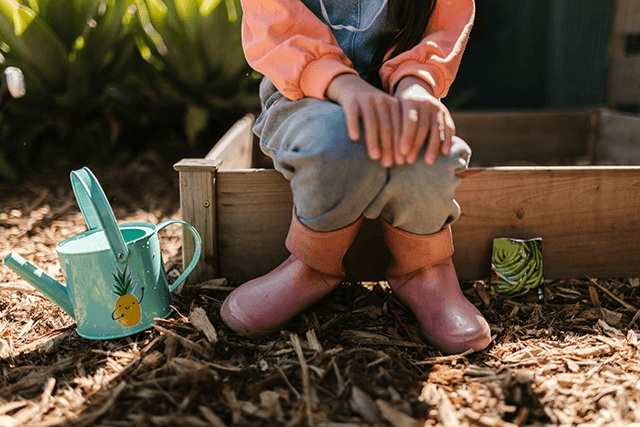
Do this thoroughly for optimum growth!
Grass clippings break down rapidly when utilised as an organic manure so it’s crucial to top them up regularly during the growing period.
You can use things like a garden rake for effectively spreading out over larger areas of land effortlessly if they are added directly onto soil surfaces without being worked into the ground first.
It is suggested however not to apply more than 1 inch of thickness at once since too much will cause compaction which can lead to root harm due no air flow around roots systems – resulting in restricted growth and poor yields from fruit and veg harvests.
When using grass clipping as mulch material, covering with extra layer compost could be beneficial.
This helps hold back weeds while maintaining moisture within upper-soil throughout hot dry spells experienced during summer; whilst also providing additional nutrients all year round when mixed with regular fertilising regimes where applicable – culminating in marvellous productive gardens everywhere!
Spread Lawn Care Clippings Over Soil to Conserve Moisture
Using grass clippings in the garden is a terrific way to save water and keep your lawn looking lush and green.
By laying out the clippings over the soil, you can provide organic material that will eventually decompose into an ace source of fertiliser.
Not only this, but spread grass clipping also help stop weed growth as they act like a coverlet stopping light from reaching any weed seedlings underneath them.
Furthermore, there’s another advantage – by having these cuttings on top it helps preserve moisture down below which means you won’t need to irrigate so often during those scorching summer months!
When it comes to using grass clippings for mulching, you must remember not to layer them too heavily in one area.
A single inch of coverage is ample enough protection without suffocating plants or luring pests such as slugs and snails.
So if you have used any chemical fertilisers or herbicides on your lawn recently, utilising this method won’t be advised since that can prove toxic for the vegetation.
What’s more, these same clippings may likewise be applied straightaway as fertiliser – both newly cultivated garden and pre-existing beds alike – how handy!
In this case, it’s best not only to spread grass clippings evenly around plants but also mix them into the soil so they decompose faster.
Doing so will provide beneficial nutrients quickly and avoid any potential problems with pests or diseases associated with having raw compost material sitting on topsoil for too long.
Moreover, you can make compost tea out of your cuttings by soaking them in water for several days until they start breaking down – then strain out the solids before pouring the liquid onto garden beds (or diluting further if needed).
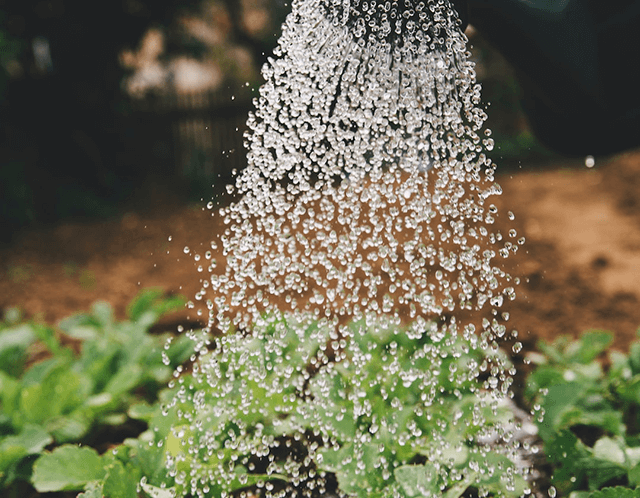
This mixture provides more immediate benefits than just using dry mulch alone – namely nitrogen content which helps promote plant growth.
However, care should be taken when applying this as an over-concentrated solution may seep through leaves causing ‘burn’ damage after wetting down afterwards.
Incorporate Grass into Compost for Nutrient Rich Soil Amendment
Using grass clippings in the garden is a brilliant way of adding beneficial nutrients to soil.
As they are full of nitrogen, grass cuttings make for an ideal amendment when using compost and helping improve the quality of your earth.
When you incorporate them into compost it can also help to reduce runoff and aid with water absorption – enabling plants to better access their own resources plus keeping soils cool during hot summer days!
Plus using grass within compost should stop weeds taking over any patches as by providing competition for root systems, it gives other flora more chance to blossom too.
Remember, grass clippings should be added to a compost pile in very thin layers, no more than two inches thick.
Too much at once can lead to compacting which won’t allow the air circulate properly.
If your grass has recently been sprayed with fertiliser or herbicide then you must keep them away from the heap; these chemicals will take too long for plants to break down and absorb, leading potential damage or illness if it’s used as mulch near any of your crops!
Mixing grass clippings well with other organic materials like leaves, twigs, wood chips or shredded paper products is key when adding them to a compost pile.
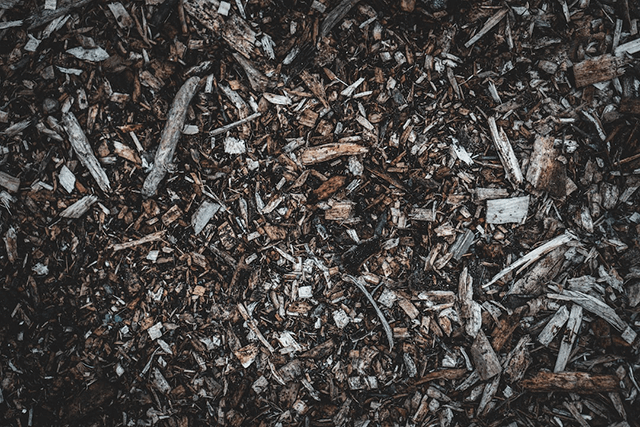
This helps ensure the proper decomposition of everything present in the mix.
What’s more, browns such as leaves give you carbon material which in turn enables the correct breakdown of nitrogen-rich greens like freshly cut lawn and weeds – something that can only be achieved if they are all added together correctly into your compost blend.
So it’s important to get this step right!
Adding freshly cut grass to your current flower beds can make a difference in improving drainage while giving an extra buffer from potential soil erosion caused by heavy rainfall or wind.
Layering the grass clippings between other biodegradable components, such as straw and wood chips when using mulch on trees or shrubs will help trap moisture within its fibres.
Furthermore, incorporating fresh cuttings into gardens can serve as weed suppressors – warding off certain varieties of plants – while also encouraging beneficial bacteria growth which means better crop yields from vegetable patches!
Consider Alternative Uses of Grass Clippings as Natural Weed Barrier
Considering alternative uses of grass clippings as a natural weed barrier is an inspired idea, particularly for those who are on limited funds.
Not only does this not require any extra materials or items to buy, it also has the added bonus of being environmentally friendly which can help reduce landfill waste.
The most popular way people use grass clippings as a means of keeping weeds away from their beds is by spreading them out all around the garden.
This simple and cost-effective measure could be just what your plots need! Have you considered giving it a go?
In the spring, grass clippings can be put to great use as a natural mulch.
Not only will it stop weeds taking over your flower beds or veg patch but also help keep moisture in the soil.
This gives plants an extra boost during hot summer gardening months and making sure those pesky weeds don’t stand a chance!
You could even apply them around newly planted trees or shrubs for added protection against weed growth; why not give it a go?
Laying down mulch directly on freshly turned soil is a great way to reduce the number of weeds growing in your garden.
The layer helps prevent aggressive vegetation from taking over while still allowing water and nutrients to access the underneath soil, creating an effective barrier against any unwanted plants coming through yet providing everything necessary for new plants to thrive.
A few inches deep should suffice – you’ll be able achieve weed control without sacrificing much-needed resources that will keep them healthy!
If you don’t want any vegetation growing in certain areas, like paths or driveways for example, then a great option is to gather fresh cuttings and spread them over those places.
Afterwards sweep up the debris left behind from lawn mowing or trimming activities near your lawn’s edges. It sounds simple but it’ll make all the difference!
This type of coverage with fresh cuttings makes an excellent natural weed barrier that won’t erode over time like other conventional options may do when exposed to constant water run-off from gutters or rainstorms without protection from nearby plant life, which helps absorb some of this moisture naturally before it reaches its destination.
Near pathways etc., this is especially important for keeping the area looking pristine and avoiding any potential long term damage caused by excessive water build up in one spot due to alack of drainage options.
When considering how best to use grass clippings for purposes outside simply being used as mulch – such as creating compost – a great suggestion would be collecting drier cuttings either via bagging after the mowing session then storing them indoors until they are needed outdoors again.
Doing so helps maintain larger quantities available without having worry about spoilage due presence dampness/moisture (which can often lead mold growth).
Having access to a large supply also tends to make things more cost effective too, giving you the best ‘bang’ for your buck when reusing resources within own back yard!
Conclusion
Using grass clippings as a natural organic fertiliser for your garden is an amazing way to keep your lawn healthy and lush all year round.
Composting the grass clippings is also a great option if you want to reduce waste and decrease your carbon footprint whilst still providing essential nutrients to your own lawn.
Plus, this natural method of fertilizing doesn’t involve any harsh chemicals or artificial products – making it an eco-friendly alternative!
Taking care of our lawns is always important task when looking after our gardens but ‘mulching’ with grass clippings can really amp up the benefits we can get to keep a lawn lush.
FAQs – Benefits of Using Grass Clippings
Q. Do I have to wait until summer to collect grass clippings?
A. No, you can start collecting grass clippings during summer months and the simply store the grass clippings somewhere cool and kept away until they’re ready for use.
Q. Can I use chemically treated grass?
A. NO, it’s important to make sure that your grass clippings don’t contain any weed seeds or chemical treatments like herbicides and pesticides.
Q. How deep should use my grass clippings be?
A. It is suggested to apply no more than 1 inch of thickness at once since too much will cause compaction which can lead to root harm due no air flow around roots systems.
This encourages the roots to grow deeper into the soil, making the plants more resilient to drought conditions.

